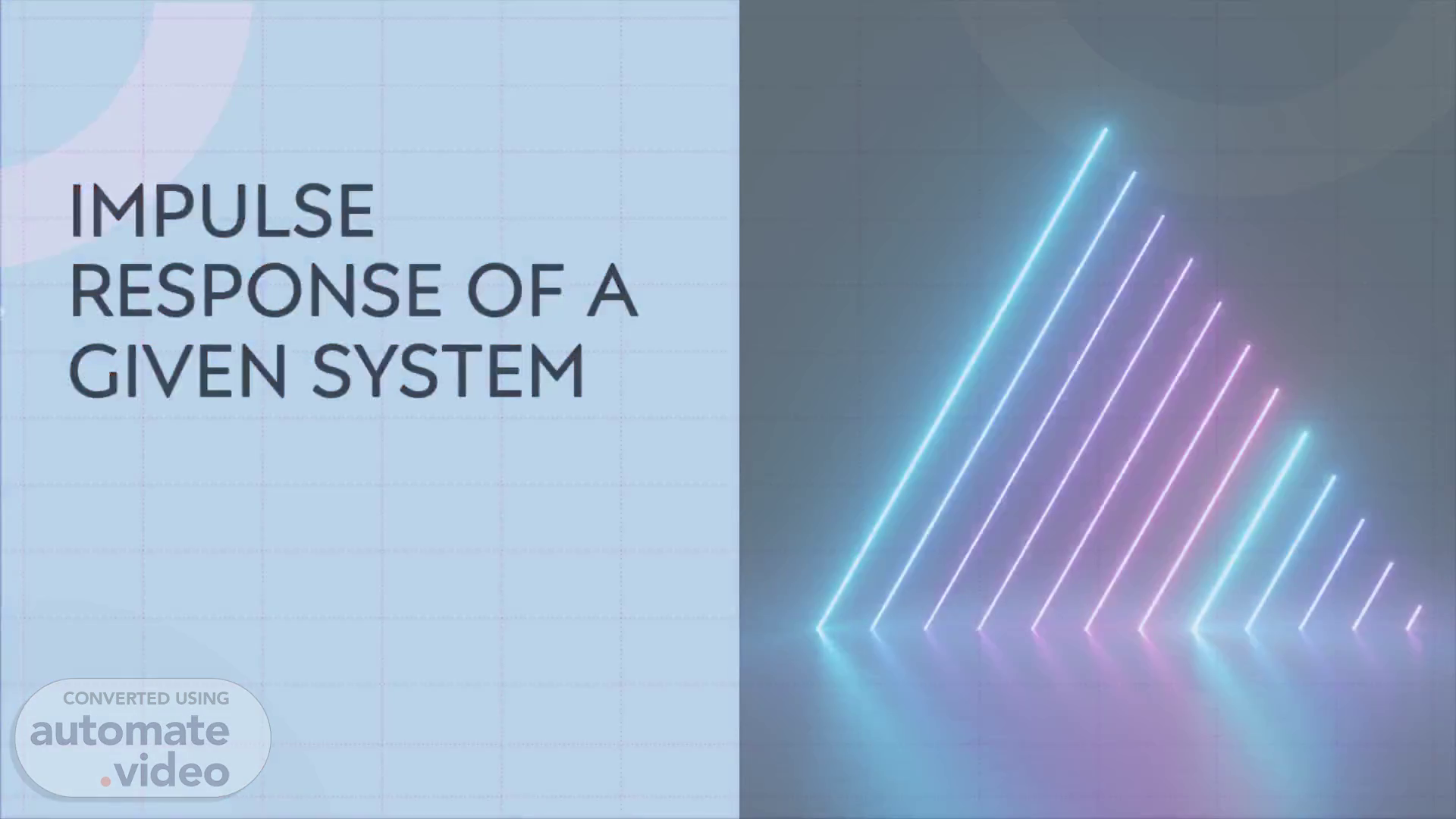
Page 1 (0s)
[Audio] IMPULSE RESPONSE OF A GIVEN SYSTEM. IMPULSE RESPONSE OF A GIVEN SYSTEM.
Page 2 (9s)
BY : AALA, MARK M. ANDAYA , ARJAY B..
Page 3 (16s)
[Audio] In acoustic and audio applications, impulse responses enable the acoustic characteristics of a location, such as a concert hall, to be captured. Various packages are available containing impulse responses from specific locations, ranging from small rooms to large concert halls.. The impulse response is the response of a system to a single pulse of infinitely small duration and unit energy (a Dirac pulse). The frequency response shows how much each frequency is attenuated or amplified by the system. The frequency response of a system is the impulse response transformed to the frequency domain..
Page 4 (58s)
[Audio] For both discrete- and continuous-time systems, the impulse response is useful because it allows us to calculate the output of these systems for any input signal; the output is simply the input signal convolved with the impulse response function.
Page 5 (1m 23s)
[Audio] Remember that v(t) is implicitly zero for t< 0 (i.e., it is multiplied by a unit step function). Also note that the numerator and denominator of Y(s) are of the same order, so a step of long division is necessary when performing the partial fraction expansion. Remember that v(t) is implicitly zero for t<0 (i.e., it is multiplied by a unit step function). Also note that the numerator and denominator of Y(s) are of the same order, so a step of long division is necessary when performing the partial fraction expansion. Remember that v(t) is implicitly zero for t<0 (i.e., it is multiplied by a unit step function). Also note that the numerator and denominator of Y(s) are of the same order, so a step of long division is necessary when performing the partial fraction expansion..
Page 6 (2m 15s)
[Audio] Since we know the response of the system to an impulse and any signal can be decomposed into impulses, all we need to do to find the response of the system to any signal is to decompose the signal into impulses, calculate the system's output for every impulse and add the outputs back together. This is the process known as Convolution. Since we are in Continuous Time, this is the Continuous Time Convolution Integral..
Page 7 (2m 42s)
[Audio] This is the code of the unit impulse response , and I use application is scilab.
Page 8 (2m 49s)
No description available..
Page 9 (2m 55s)
No description available..
Page 10 (3m 2s)
[Audio] This is the graph when the code is running.
Page 11 (3m 8s)
Thank You.